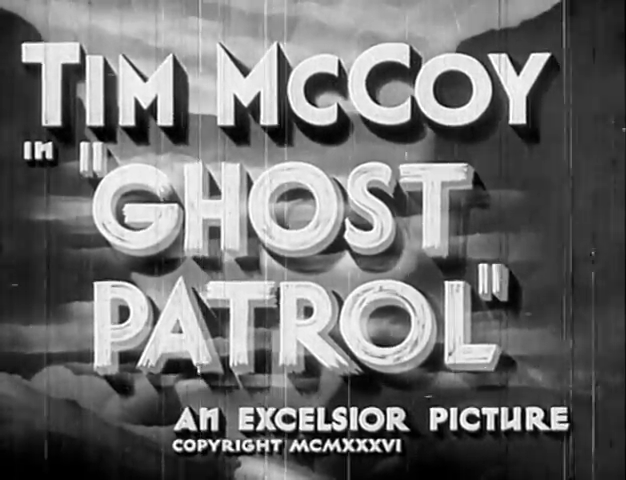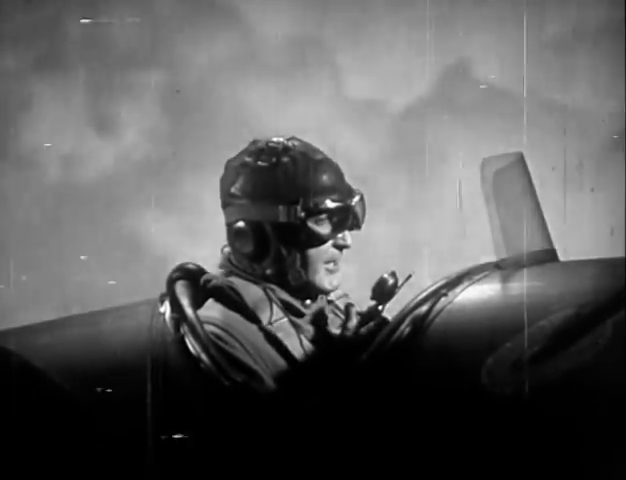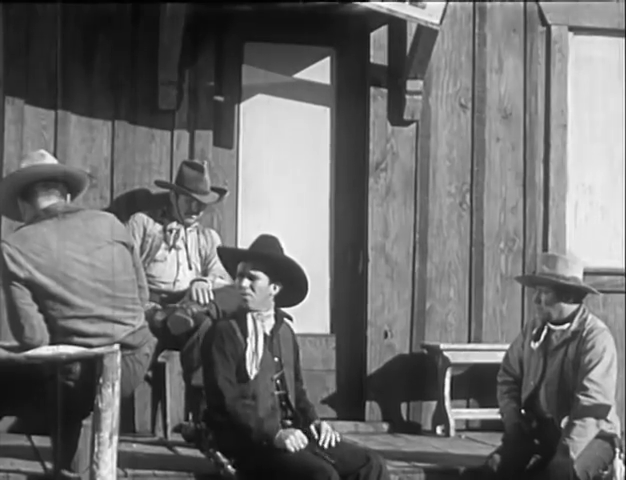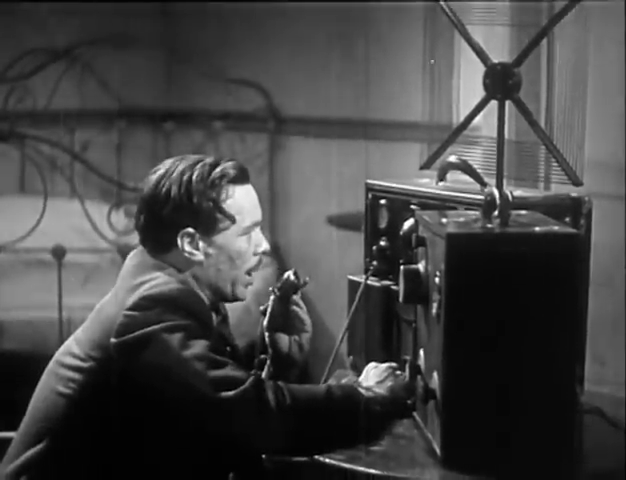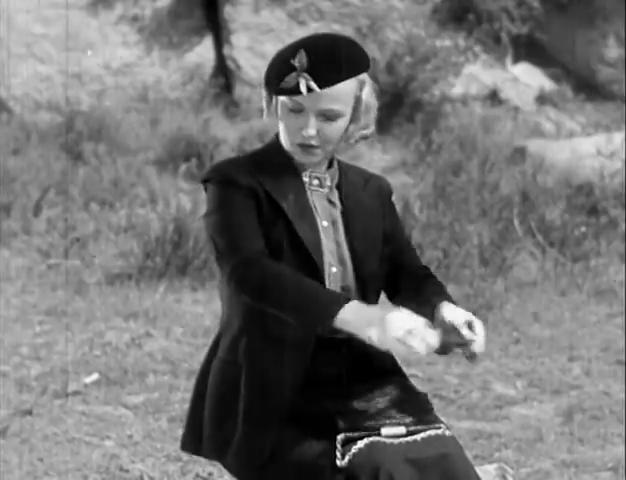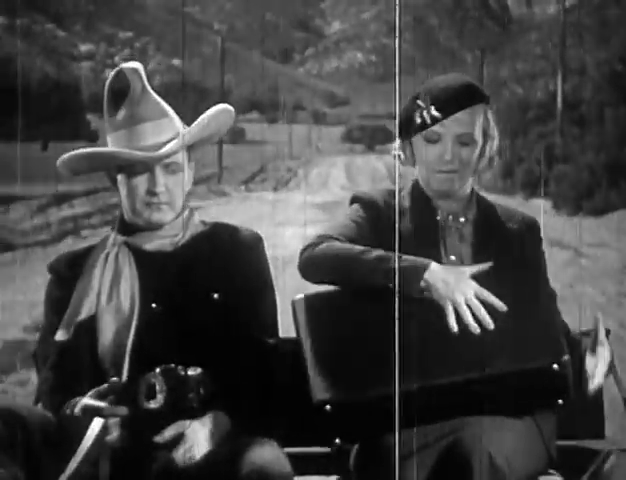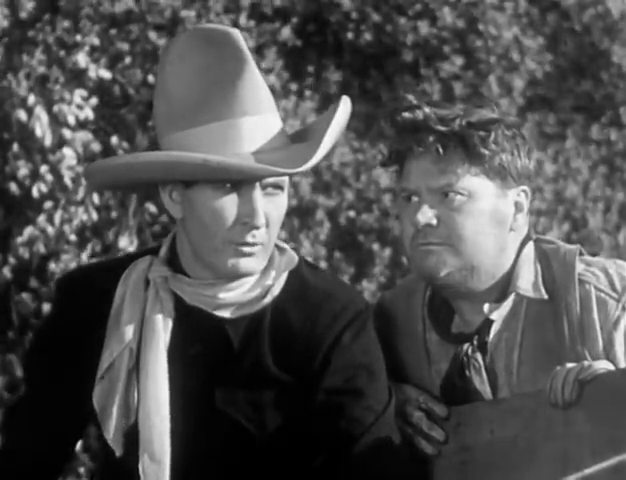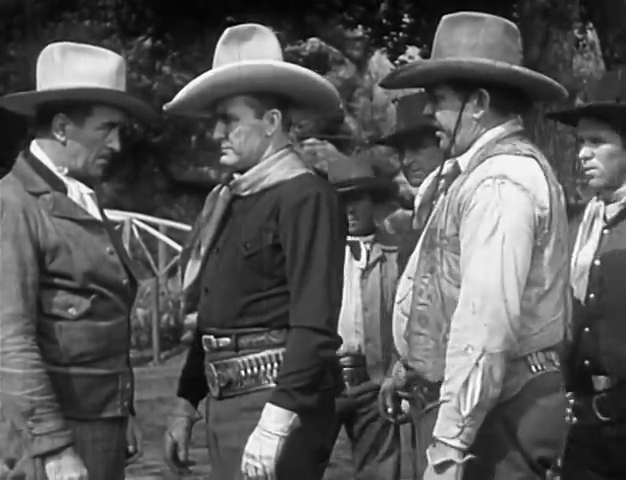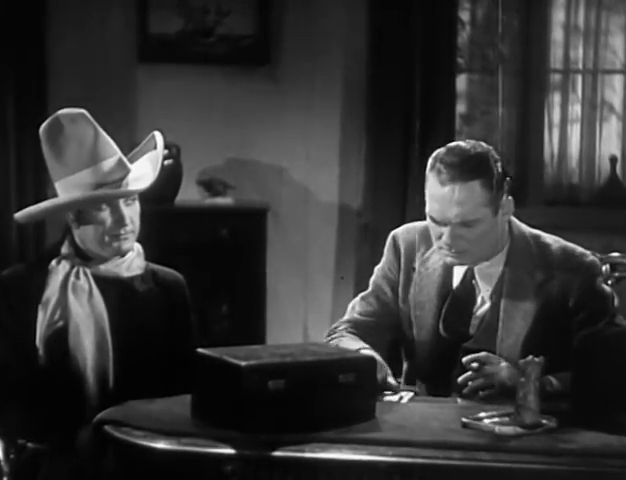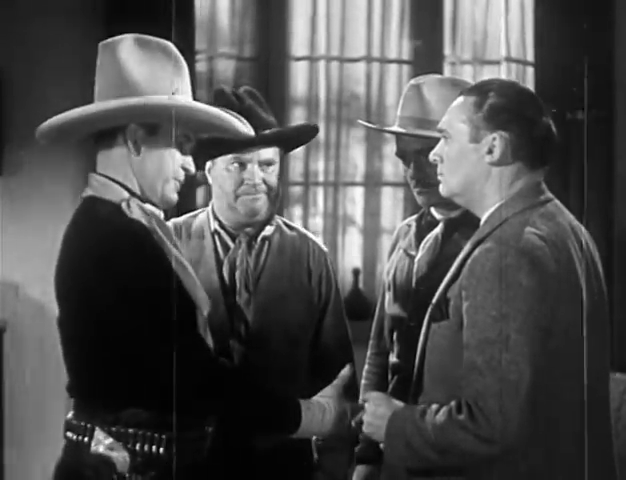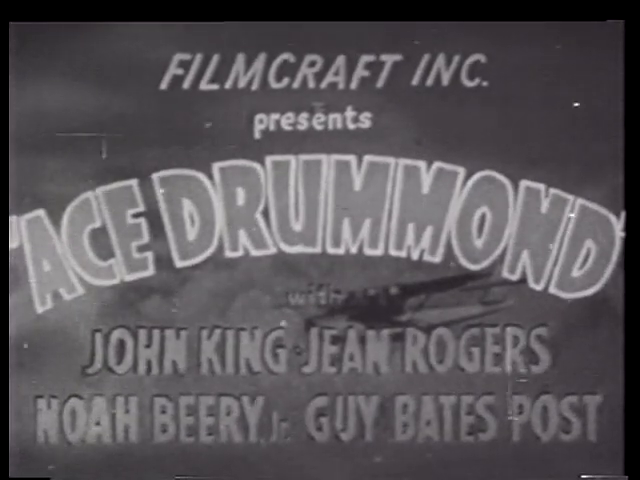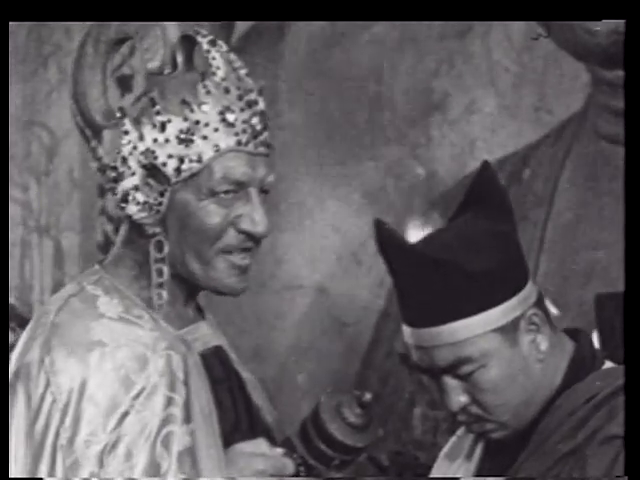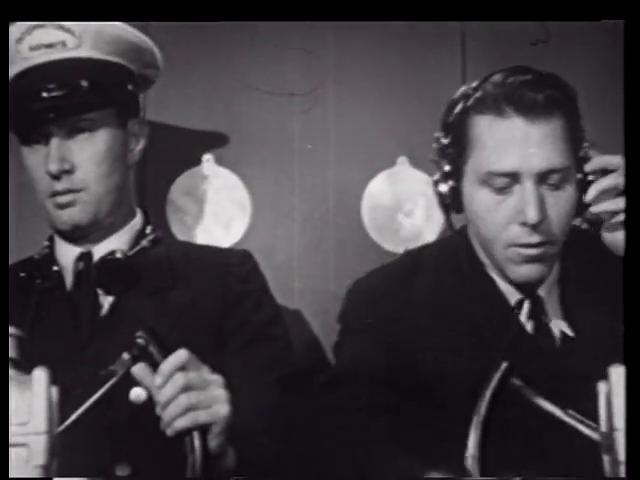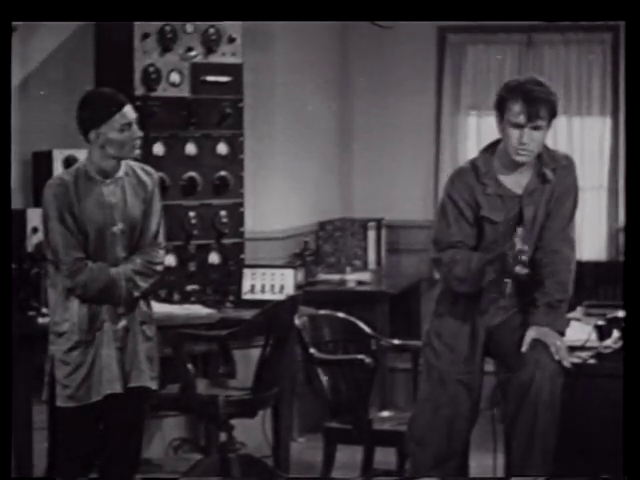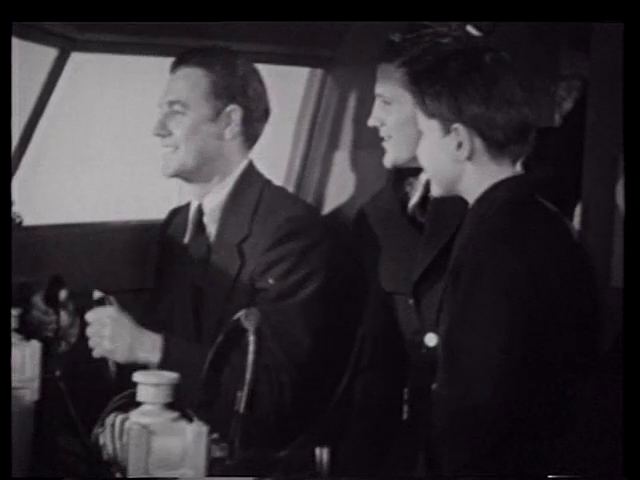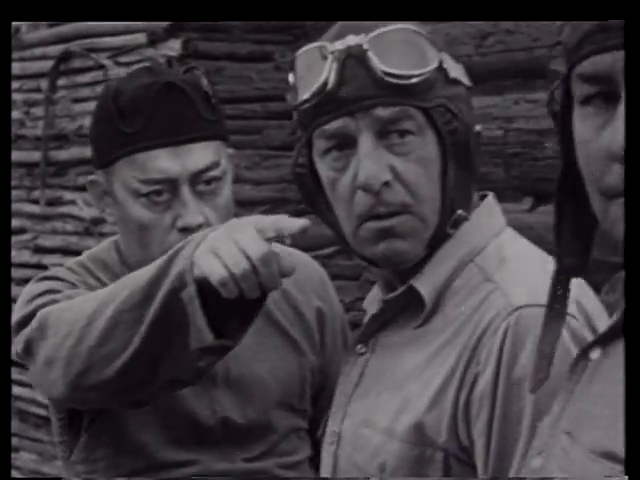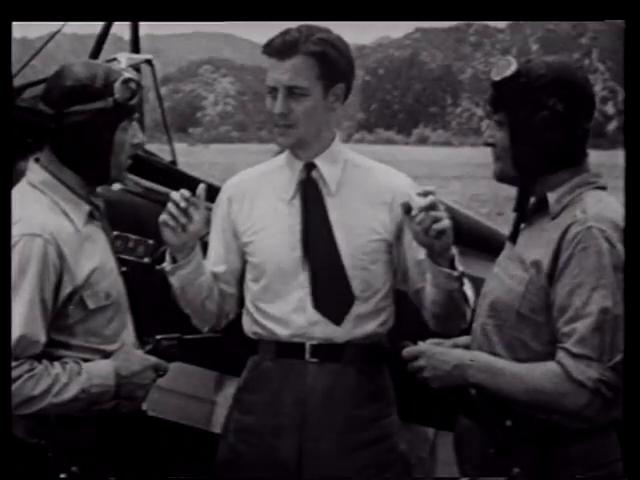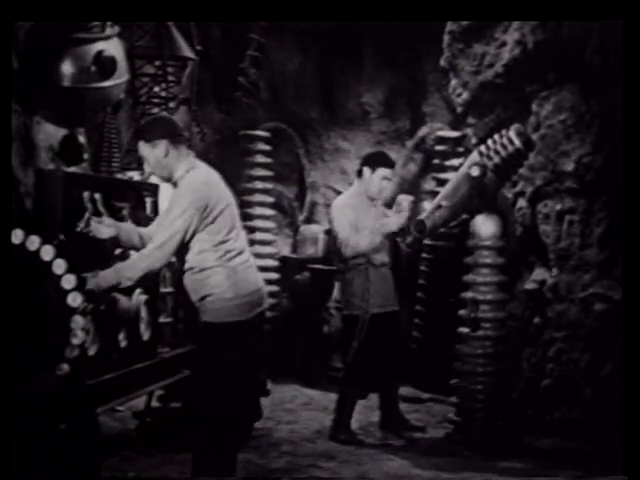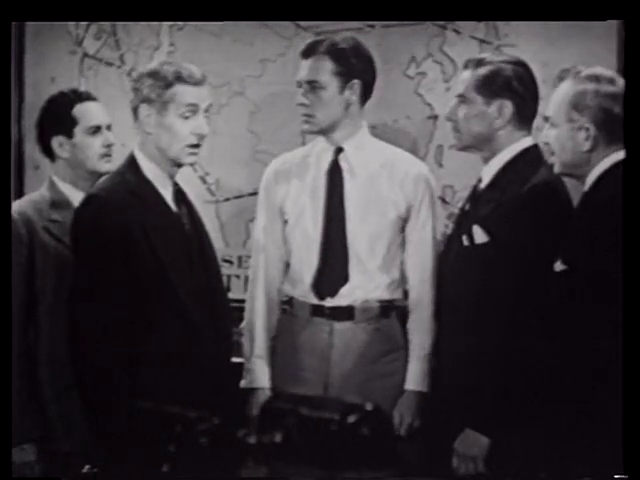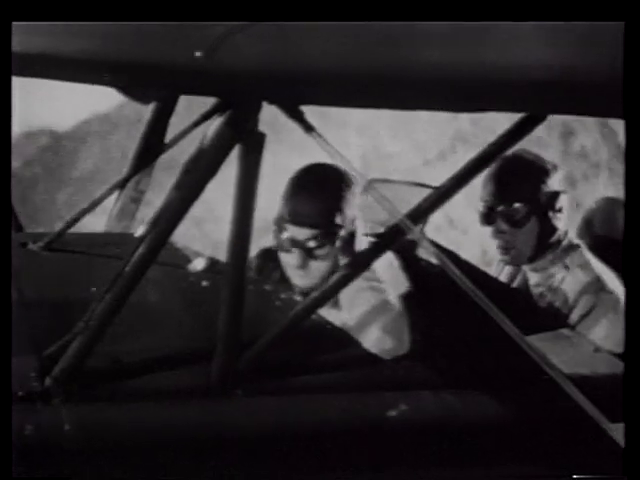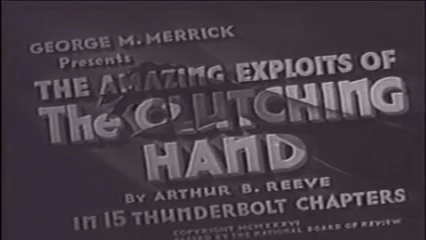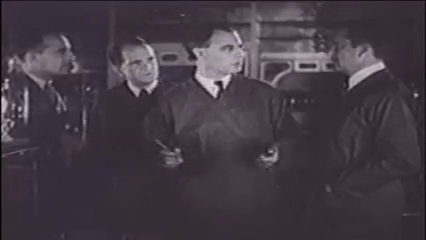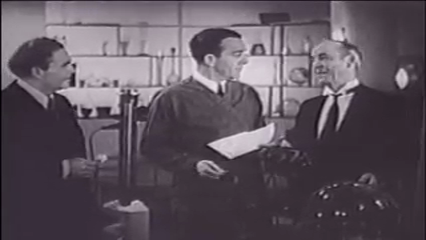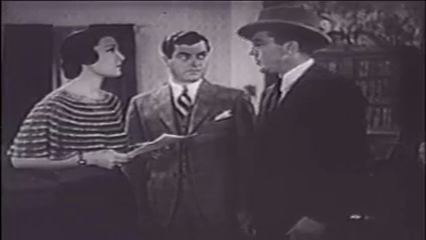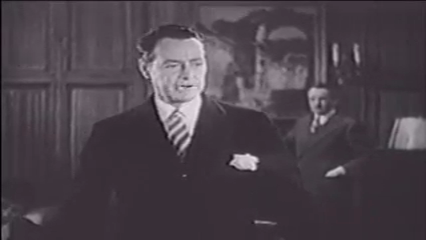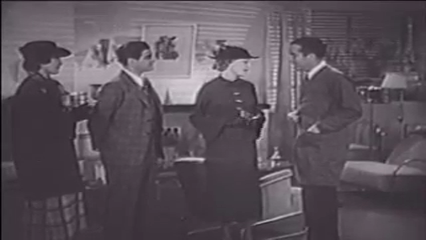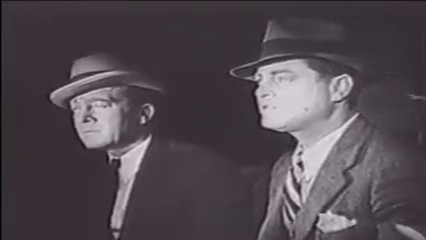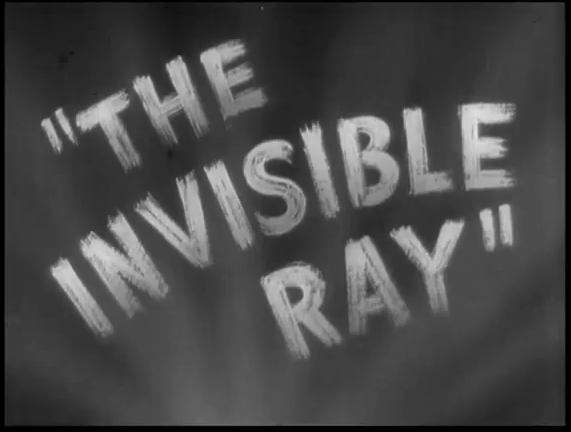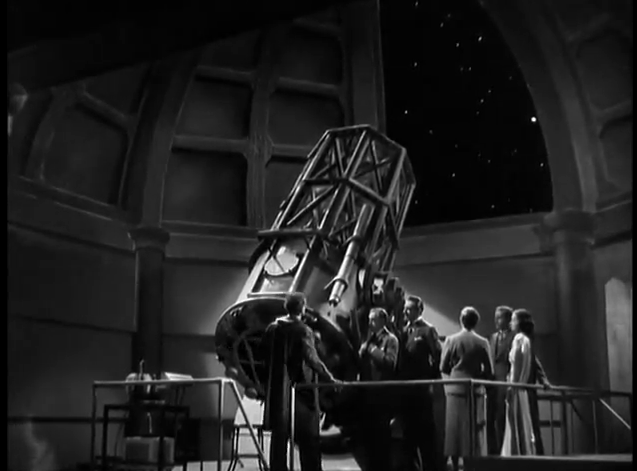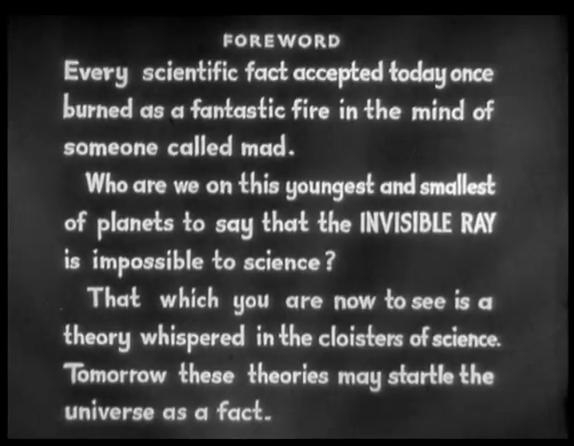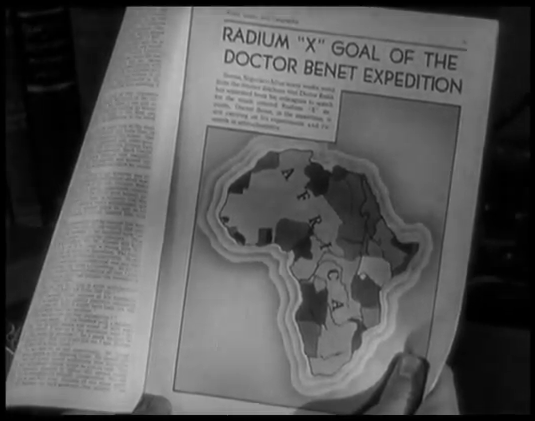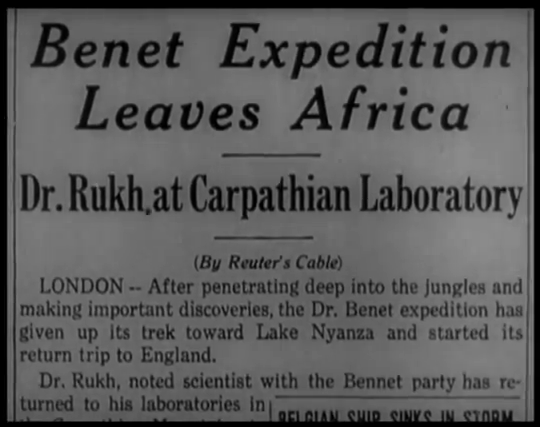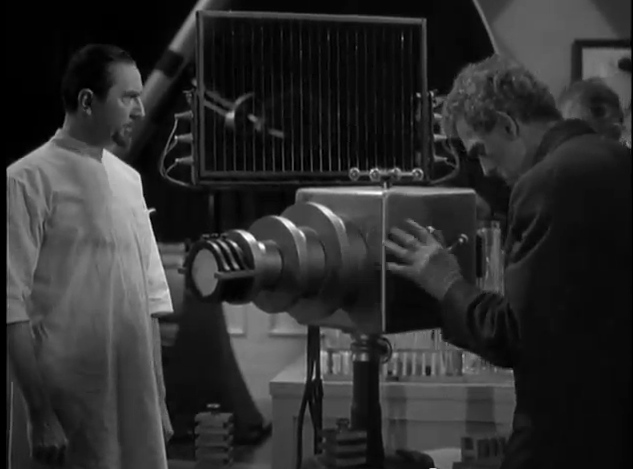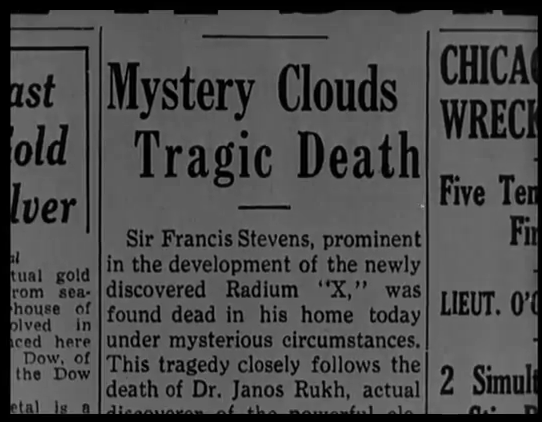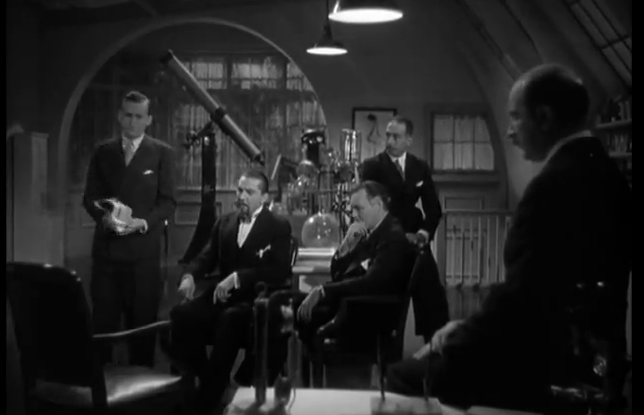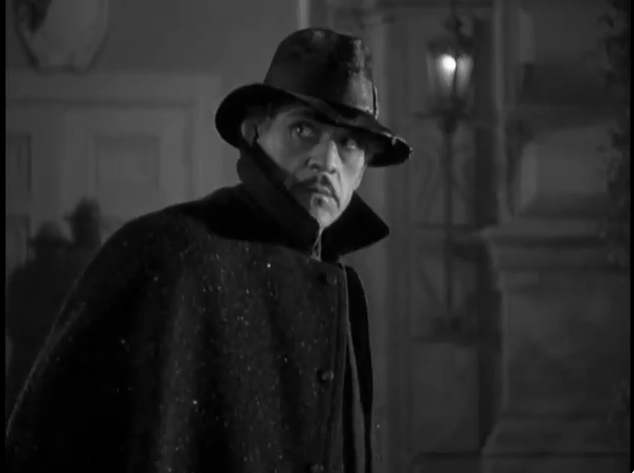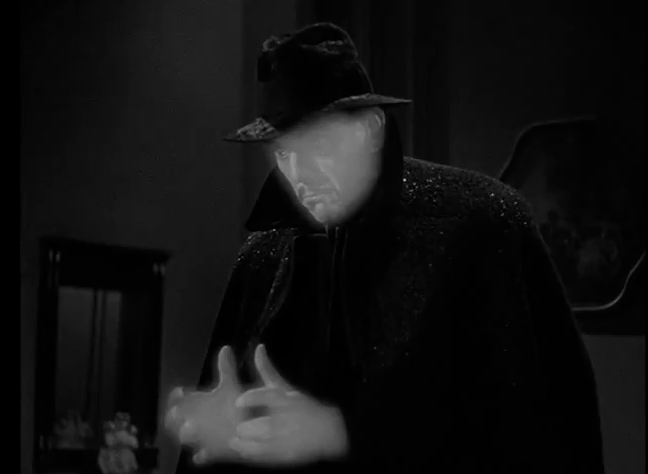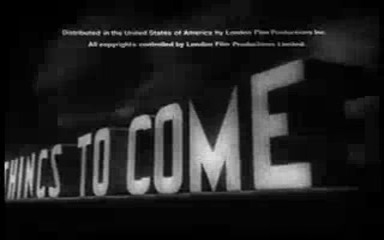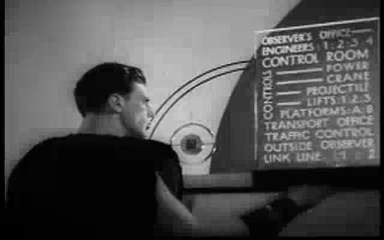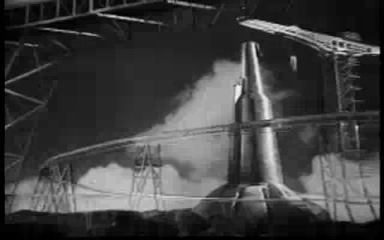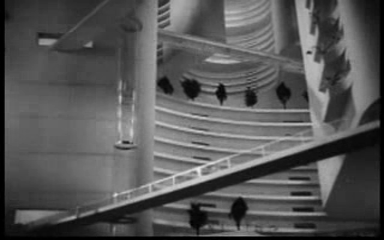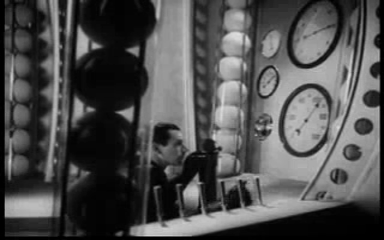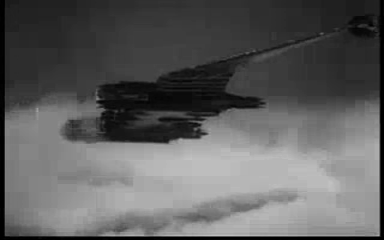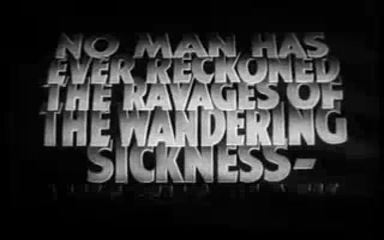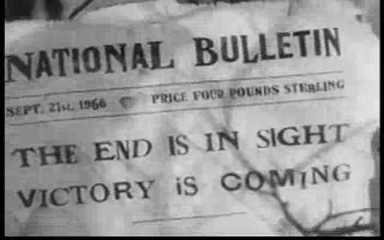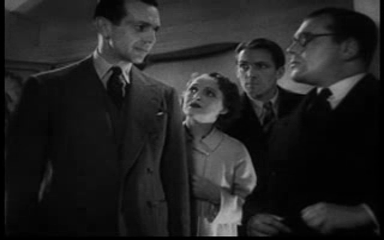-
#473 – Ghost Patrol (1936)
Ghost Patrol (1936)
Director: Sam Newfield
Film review #473
SYNOPSIS: Professor Brent has invented a machine that can stop internal combustion engines from a distance. The leader of a group of bandits kidnaps him and forces him to use his invention to bring down aircraft so they can rob them. Federal agent Tim Caverly is sent in to investigate and rescue the professor, and when the local bandits mistake him for outlaw Tim Toomley, he assumes his identity in order to get closer to the bandits and uncover their plan before they bring down the next plane…
THOUGHTS/ANALYSIS: Ghost Patrol is a 1936 film. The story centres around a device that is able to bring down planes from a distance by stalling their engines, and a gang of bandits that has kidnapped the inventor and forcing him to use the machine to bring planes down, so that they can loot the wreckage. Government agent Tim Caverly is sent in to investigate and rescue professor Brent, who invented the device. Encountering the bandits who are responsible, they mistake him for Tim Toomley; a noted outlaw, and Tim plays along in order to get closer to the bandits and find out where the professor is. The film is basically a western with the added sci-fi element of this machine that can stop internal combustion engines. It’s called a “radium tube,” and a lot of the inventions in these films are named after radium, or fuelled by it for some reason. Anyway, at just under an hour long, there’s not too much in the way of content to talk about: the pacing is slow, and there’s just a lot of horseriding and dialogue that moves along the story at a slow pace. Everything is quite predictable and unsurprising, and a swift resolution at the end doesn’t provide much of an exciting climax. The plot reminds me very much of a film serial, which would probably have found a way to stretch the story into three years of a back-and-forth between the characters, while adding nothing of value otherwise.
The characters themselves are pretty forgettable and bland too. Tim Caverly/Toomley is a standard gun-slinging cowboy with no real personality. His sidekick serves as a bit of comic relief, and the sole female character delivers a good performance, but ultimately serves very little purpose other than being the daughter of the professor (the only purpose a vast majority of female characters have in films at this time). The villains are, as well, a rather forgettable bunch.
There’s not much that is remarkable in terms of the film’s production: most of it looks like repurposed sets and props from any western from the era. The machine looks quite cool and complex, but we don’t really see much of it: in fact, the professor and the machine don’t show up until after halfway through the film. The lack of any accompanying music also makes the film feel empty, and there’s a mismatch in the audio, which means you can hear when the film is on a set from the echo in the audio to when it is outside on location. Also, I’m not sure what the title “Ghost patrol” is referring to, as there’s nothing remotely ghost-like or much patrolling done at all. Overall, Ghost Patrol is a fairly forgettable film with unremarkable characters, a story you’ve seen before, and a setting in an oversaturated western genre that even with a sci-fi twist fails to stand out.
-
#452 – Ace Drummond (1936)
Ace Drummond (1936)
Film review #452
Directors: Ford Beebe, Clifford Smith
SYNOPSIS: International Airways are planning to open a new air route through Mongolia, however, their airplanes are coming under attack by a mysterious villain who calls himself “the Dragon.” Ace pilot and G-man Ace Drummond is called in to investigate and put a stop to The Dragon’s plans to secure a secret mountain of jade for himself…
THOUGHTS/ANALYSIS: Ace Drummond is a 1936 Universal Pictures serial comprised of thirteen chapters, based on the comic strip of the same name. The comic was created by Captain Eddie Rickenbacker, one of the most famous U.S. pilots in World War I. The serial starts out with attacks on numerous airplanes owned by International Airways, who are working to establish a new air route through Mongolia. Ace Drummond, a pilot and “G-man of the air,” is called in to investigate the incidents, which are being masterminded by a criminal organisation led by a man known only as “The Dragon.” From there, the serial unfolds in a typical fashion, with Ace and his friends taking on The Dragon’s henchman in fistfights, shootouts and in the air. There’s plenty of story elements that fill the serial, and the story has a direction as situations change, which is something that many serials don’t do. The main plot of the serial is still a back-and-forth between the heroes and villains, but there’s some development with the characters and variety of settings that keep things relatively interesting. The plot concerning an airline and a secret mountain of jade isn’t the most exciting story, but there’s enough going on to not worry about the end goals.
The characters are a very typical cast of serial characters, starting with the youthful action hero Ace. There’s nothing too special about him, but he does sing…the exact same song nearly every chapter. It’s something to make him a little unique I guess, but other than that he’s just the standard lead. Peggy Trainor is the sole female character that is looking for her kidnapped relative, which is one of about only three roles that female characters got in these serials. Jean Rogers, who plays Peggy, also played Dale Arden in the Flash Gordon serial in the same year. The rest of the supporting characters are pretty unremarkable. A lot of the serial is set in a monastery, where many monks live alongside the Grand Lama. I assume that it’s supposed to be Buddhism in all but name, but I don’t think any effort was taken to accurately represent the culture, as with any non-American culture in this era. There are, at least, some of the Asian characters actually played by Asian actors, although the Grand Lama and some of the more prominent Asian characters are white actors made up to ‘look’ Asian. The Dragon doesn’t really do much as the villain: he communicates through some kind of spinning fan (I don’t know how it works), and he is suspected to be one of the people working with the airways, but that element of mystery is fairly commonplace. Each chapter ends with a pretty cool looking dragon model breathing fire as he proclaims “The Dragon commands it!” As mentioned, there’s a good variety of settings that the serial takes place in. The plane fights are decent, and the fight scenes are fairly well choreographed. The acting is decent from the main characters, but a bit stifled through some of the other characters. One more unique thing about is that the intro of each chapter begins with a recap of the previous one in the form of a comic strip, which is reminiscent of Ace’s origins.
Overall, I would say Ace Drummond is a decently crafted serial that while doesn’t provide anything spectacular from the characters or setting, still has a decently flowing story and enough action to elevate it above the average quality of these serials.
-
#424 – The Clutching Hand (1936)
The Clutching Hand (1936)
Film review #424
Director: Albert Herman
SYNOPSIS: Dr. Paul Gironda has discovered a formula for turning ordinary metal into gold, a discovery that prove very valuable for the corporation he works for. Before he can reveal this discovery however, Dr. Gironda is kidnapped by a criminal known only as “The Clutching Hand,” and master detective Craig Kennedy is assigned to the case. Along with his journalist friend Walter Jameson and Gironda’s family, must find the professor and bring down the criminal plans of the clutching hand once and for all…
THOUGHTS/ANALYSIS: The Clutching Hand is a 1936 movie serial composed of fifteen chapters. It is based on the Craig Kennedy detective novels, most specifically, the final one that was written by their author Arthur B. Reeve. The film starts off with scientist Dr. Paul Gironda finishing a formula for synthesising gold. However, before he can reveal the formula to the board of directors for the company he works for, he is kidnapped, along with the formula. Detective Craig Kennedy is assigned to the case and along with his friend, journalist Walter Jameson, they work to find Dr. Gironda and stop the criminal mastermind known only as “The Clutching Hand” from obtaining the rest of the formula. The setup is a very familiar one in the serial format, and offers no surprises. The main problem with the story is just how boring it is. With a runtime of just over five hours, there needs to be plenty going on to keep the viewers interest, but there really isn’t. The constant back-and-forth between trying to rescue Gironda and finding the missing pages of the formula gets old fast, and there’s no real variety to the scenarios that play out on screen. Sometimes the serial just spends time explaining something that’s going on, which really drags. There’s a secondary plot concerning a criminal who has just been released from jail and his connection to Gironda’s family, but I didn’t even notice it while watching. At one point Gironda is rescued, only to be kidnapped again on his way home; it is really dull and repetitive.
The characters are again just the usual types as you see in these serials. Most of the time you’re just watching men in suits talk or throw punches at each other without much distinction. Craig Kennedy perhaps breaks the mould a little, in that he is not the young, dashing hero you would expect, but a more rough-looking, middle-aged detective. Gironda’s daughter and wife are the two female characters, who exist to either be kidnapped or provide secretarial duties. The Clutching Hand himself takes on the role of the masked villain whose identity is not revealed until the final chapter, and issues orders through a screen to his numbered henchmen. Again, nothing extraordinary there. The other minor characters are not worth remembering, as they serve little purpose other than to fill out the fight scenes.
The serial reminds me a lot of the Blake of Scotland Yard serial of 1937, in that it was produced by an independent company under similar constraints. But when the big studios were putting out serials like Flash Gordon in 1936, there’s no way these smaller serials would be of interest. There’s very few sets in this serial; and the constant re-use of a hotel setting where secret meetings take place makes you feel like you’re going around in circles watching the same thing play out in the same place chapter after chapter. The action scenes are dull and unchoreographed, with the film clearly being sped up to make it look more exciting, but the near-complete absence of any background music and the lack of choreography that shows when people fall over before they are even punched means it’s not very believable. The car chases have no interior shots of the passengers, and thus feel disconnected from anything plot-wise. Perhaps the only interesting part of the serial is the very end when (spoilers) The Clutching Hand is revealed to be Dr. Gironda himself, who apparently made up the formula for synthesising gold in order to recoup his massive losses on the stock market. It also turns out that his daughter is actually not his daughter at all, but that of the criminal Mitchell who we saw released at the beginning of the serial, and Gironda tries to find a way of disposing of him before he can learn the truth. This plot, while actually interesting, doesn’t really go anywhere, and has little impact on the main story. As the gold formula was a fake the whole time and Gironda wasn’t actually kidnapped, then you can conclude that the whole story was essentially pointless, and there is no payoff for watching five hours of this back-and-forth. I would advise skipping The Clutching Hand, it is a dull and poorly produced serial that, while having a few good ideas, simply doesn’t compete with the behemoths of the serial industry.
-
#20 – The Invisible Ray (1936)
The Invisible Ray (1936)
Film review #20
Director: Lambert Hillyer
A film about the impacts of scientific discoveries on the human mind…
Dr. Janos Rukh is a bit of an outcast scientist. He has invented a telescope that can see far into space- in particular, the Andromeda Galaxy. By picking up rays of light from the galaxy, he can use them to look at how Earth looked in the past. He has invited A group of people to witness his experiment, including his wife Diana, Dr. Felix Benet, Sir Francis Stevens, his wife Arabella, and their nephew Drake.
The experiment is a success, and the group view the Earth from millions of years ago. They witness a meteor crashing into the continent of Africa, which coincides with the other scientists investigation into the meteor, and now they have a location to search thanks to Rukh’s experiment. During this evening, there is also an instant attraction between Diana Rukh and Drake, which they both try to ignore.
The group has travelled to Africa on an expedition to find the meteor. Rukh has split from the group to find it himself. When he finds the meteor, he becomes exposed to the radiation of “Radium X”, of which the meteor is composed. Later that night, when it is dark, he begins to glow as a side-effect to the radiation, and he can kill someone just by touching them. He confides in Dr. Benet, who develops a counteragent that Rukh must take every day so the effects don’t return and kill him.
The radiation also begins to affect Rukh’s mind. When the group return to Paris, Dr. Benet uses a fragment of the meteorite to heal sickness and cure blindness (the cure also works on Rukh’s elderly mother), Rukh feels as though his discovery has been stolen, and begins plotting revenge. He fakes his own death, upon which Diana and Drake marry. Rukh intends to kill off the five people on the expedition who have betrayed him, and he goes after them one by one.
Eventually, only Ronald, Diana and Benet are left. They work with the French police to spring a trap to lure him in by staging a lecture and inviting a number of leading scientists. They will turn off the lights at midnight, and if Rukh is there, he will light up. Rukh infiltrates the party and kills Benet, and heads upstairs to finish off Diana and Drake. Rukh finds Diana, but finds himself unable to kill his former wife, and goes to find Drake instead. Just then, his mother appears and tells Rukh to stop. She smashes the bottle of the counteragent made by Benet, and he jumps out a nearby window, falling to his death, and bursting into flames…
I think that what we have is an interesting scenario in this movie: What are the human ramifications of scientific pursuits? Rukh is very much portrayed as a recluse, and a little bit of a mad scientist. This characteristic is the central point of the film, as he slowly loses his mind and desires to exact revenge on those who have stolen his discovery. The foreword to the movie reminds us that every scientific fact was once “a fantastic fire burning in the mind of someone called mad”. A scientist must be daring to challenge what is already considered fact, and change people’s understanding of the universe. In the past, this would have earned them ridicule and persecution from religious leaders, heads of state and fellow scientists (Although this happens less so today, there is no doubt that it still exists.
The movie asks us to keep an open mind, and speculate whether the events that take place in the film could happen. Could we really look back in time by capturing the light of distant galaxies? Does that light contain information to what it has seen? It would be easy to dismiss such a wild tale, but we know that the light we see coming from distant stars is perhaps thousands of years old, and by looking at the stars in the night sky, we are essentially looking back in time. Could that light contain information about what it has seen during its travels? Very unlikely, but this movie does encourage us to keep an open mind to the possibilities of new discoveries that could change everything we know about the universe. This is what science is: A self-correcting procedure, though perhaps it is misrepresented as a cold, infallible truth, which is simply not (for me) what science is about.
-
#15 – Things to Come (1936)
Things To Come (1936)
Film review #15
Director: William Cameron Menzies
A look at just what the future could hold in the next 100 years…
Christmas 1940: In Everytown, John Cabal finds it hard to celebrate because he fears impending war. His feelings are shared by his friend Dr. Harding, but their optimistic friend Passworthy insists that war will advance technological progress if it does happen. Their fears are confirmed later that night when a bombing raid on the town triggers global war. Cabal becomes a pilot and some time later, shoots down en enemy bi-plane. When landing, he pulls the injured enemy pilot from the wreckage, and reflects on the whole madness of war. A little girl runs up to them, closely followed by a poisonous gas cloud. Cabal puts on his gas mask, and the enemy pilot gives his to the girl. Cabal gives the pilot his pistol as he and the girl run, and the pilot shoots himself. The war rages on for over 25 years, resulting in the almost complete collapse of civilisation, with technology being exhausted from fighting and plunging the world into a new Dark Age. With the last few planes, the enemy spreads a disease which becomes known as the “wandering sickness”, of which there is no technology with which to develop a cure.
May Day 1970: In the ruins of Everytown, a man known as The Chief declares he has ridden the world of wandering sickness by shooting everyone who was infected. He still however, wishes to wage war, trying to defeat the “hill people” so he can gain control of the mines and their oil, which he wants to use to power his planes. When a futuristic plane lands outside town, John Cabal emerges and declares himself a part of the new civilisation “Wings Over The World”, based in Basra, Iraq. He says the new world order made of the surviving engineers and mechanics has eradicated war, and abolished independent nations. The Chief refuses to listen to him, and has him locked up. Gordon, a mechanic who The Chief has been ordered to fix the pre-war planes he has, wants to help Cabal, and with the help of Cabal’s old friend, Dr. Harding, fixes a plane and flies to the Wings Of The World headquarters to warn them of Cabal’s imprisonment. They mobilise a fleet, and uses their “peace gas”, drop it on the town and render the population unconscious, and killing The Chief, signalling the end of the old ways of war.
1936: Everytown, and the world is now a futuristic utopia, in which everyone works together for scientific progress and achievement, however a sculptor by the name of Theotocopulos is not content with society, he says man needs a “rest” from the rush of technological progress, with mankind about to take its first manned flight around the moon. Cabal’s great grandson Oswald Cabal is now head of the governing council. His daughter Catherine and her boyfriend Horrie Passworthy insist on being the ones to fly the spaceship. When Theotocopulos rallies a mob to attack the “space gun”, the symbol of the technological progress, Cabal launches the ship ahead of schedule, as the mob descends on the space gun. The movie ends with Cabal reflecting on the nature of progress and what part humanity plays in the quest for knowledge:
“Rest enough for the individual man. Too much of it and too soon, and we call it death. But for MAN no rest and no ending. He must go on–conquest beyond conquest. This little planet and its winds and ways, and all the laws of mind and matter that restrain him. Then the planets about him, and at last out across immensity to the stars. And when he has conquered all the deeps of space and all the mysteries of time–still he will be beginning.”
…
“If we are no more than animals–we must snatch atour little scraps of happiness and live and suffer and pass, mattering no more–than all the other animals do–or have done.” (He points out at the stars.) “It is that–or this? All the universe–or nothingness…. Which shall it be, Passworthy? Which shall it be?”
This film was written by famed Sci-fi screenwriter H.G.Wells (War of the Worlds), and it does what science-fiction does best: Imagines the future, and considers the philosophical implications of said future.
But just how accurate was H.G.Wells’ prediction? Well first of all, most ominously, he predicted the outbreak of a second world war only sixteen months from when it actually happened. The accuracy of which he predicted the use of aeroplanes and bombing raids is also rather eerie. The nationality of the enemy fighters is never mentioned, but it does not take much imagination to say they are German. Luckily, the Second World War only lasted six years rather than the imagined 26 years in the film, and we managed to avoid plunging the world into another Dark Age. Perhaps because of this, we were able to land on the moon a lot earlier than 2036 (1969).
A lot of questions are raised in the film about the relationship between humanity and science: Is there a balance between science and humanism? Mankind must continue to build its knowledge and broaden its horizons, even if there is no limit to what may be learned. So how are we still able to retain our humanity in the face of the overwhelming face of progress? Is war a part of being human itself? These are all questions that still hold relevance today (and always will). The fact that an artist questions the society of 2036 is a point of interest. Is it the artists role to reinforce humanity and to address the problems of society?
The cinematic design of the movie is very well done for its time. The silhouettes of marching soldiers, air raids, and building montages that segue the different sections of the movie really set the mood of the movie and what is happening as the dates and years scroll by on the screen. The changing architecture of the fictional Everytown in Southern England where the town is set also allows the nature of time passing to be seen, from 1930s city, to post apocalyptic ruin, to future metropolis. The same town undergoes a radical transformation over the 100 years that the film depicts.
So in conclusion, Things To Come is an ominous look at the future as seen in 1936, from imagining WWII, to the recovery from the collapse of society from war, the question always remains of how humanity copes with progress and science, and just what being human means in the age of science.
